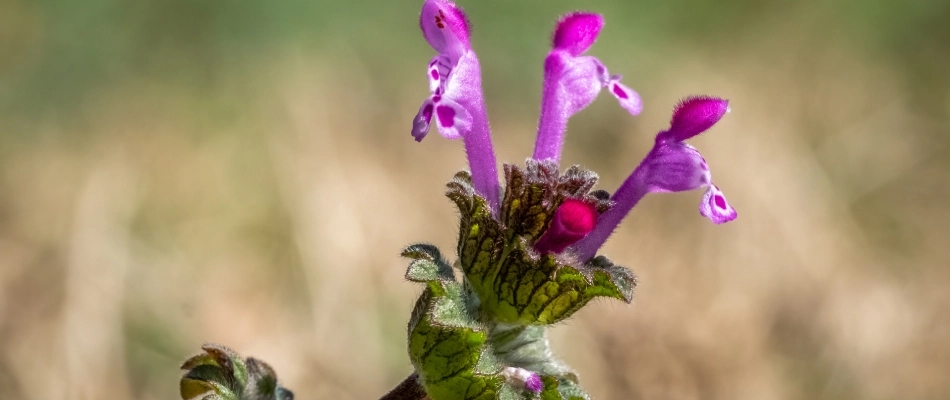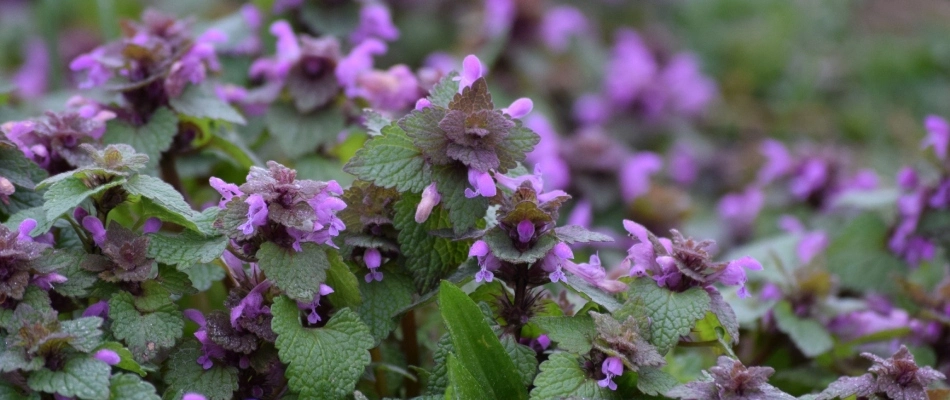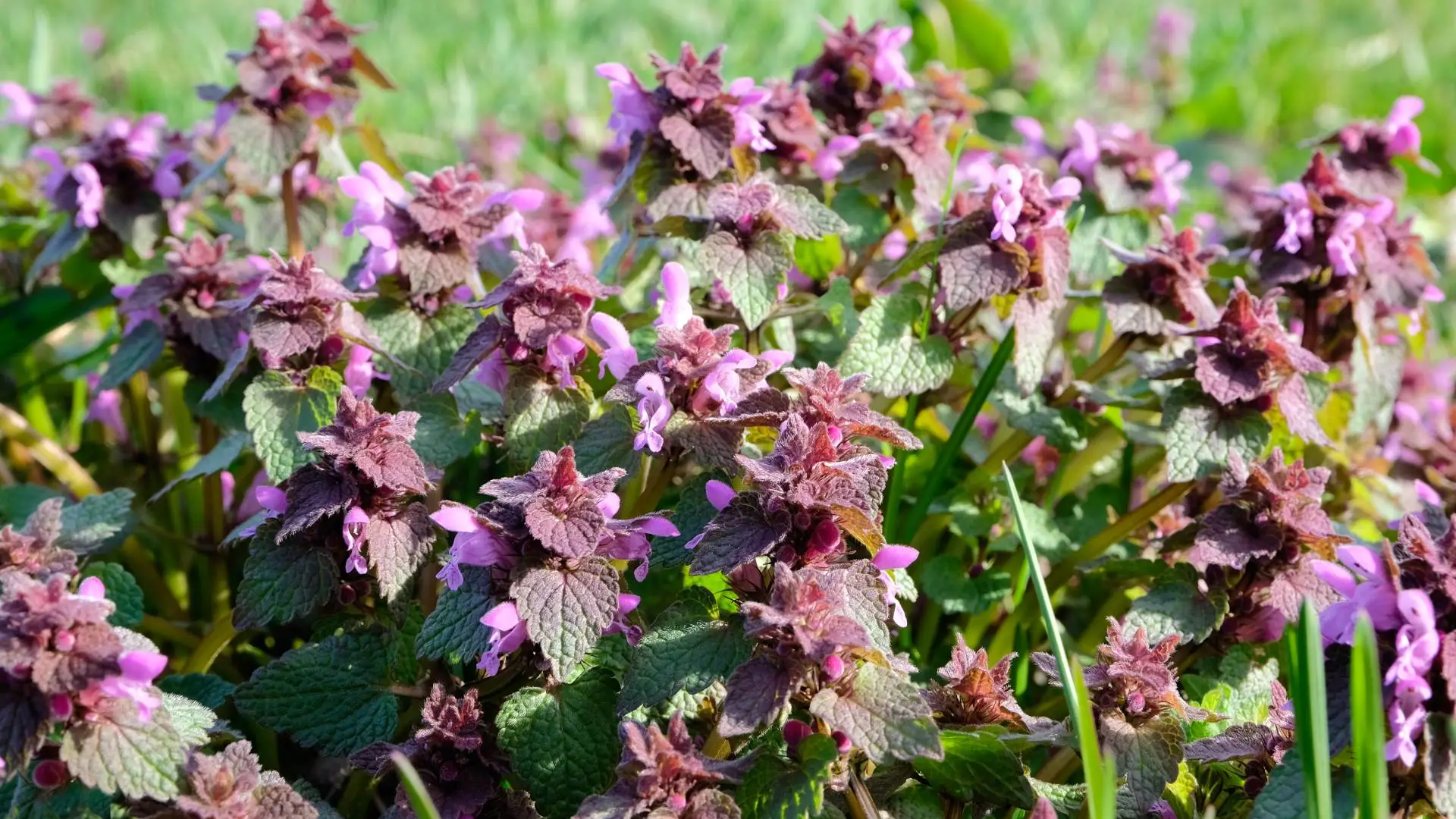Weeds are not only a pesky eyesore, but they can also steal sunlight, water, and vital nutrients from your grass. Some specific weeds you should watch out for are chickweed, henbit, and purple deadnettle. Chickweed has oval-shaped leaves and small white flowers. Henbit has small, hairy leaves and can grow reddish-purple flowers. Purple deadnettle has green and purplish-red leaves and purple flowers. These weeds tend to thrive during the springtime here in Indiana, so keep an eye out for them on your lawn this spring.
1. Chickweed

What does it look like? Chickweed has small, oval-shaped leaves and can grow small, white flowers. This weed will often grow in large patches. Its leaves and stems are also sparsely covered in small hairs.
What conditions does it thrive in? Chickweed typically germinates from January to early March when soil temperatures reach around 60 degrees Fahrenheit. The optimal temperature range for chickweed to thrive is 54 to 68 degrees Fahrenheit. Chickweed seeds can also sprout at much higher temperatures if the soil is very cool and moist. This weed prefers to grow in open areas.
What time of the year does it emerge? Chickweed tends to emerge anytime from the early spring to the late summer. However, chickweed growth is at its peak during the springtime.
One chickweed plant can produce thousands of seeds!
2. Henbit

What does it look like? Henbit has small, slightly darker green leaves that are usually covered in fine hairs. This weed also has reddish-purple, tubular flowers and tends to grow low to the ground in large patches. Henbit is a form of deadnettle, which is why many property owners often mistake it for purple deadnettle.
What conditions does it thrive in? Henbit will germinate in soil that is anywhere between 59 and 68 degrees Fahrenheit. Because this weed favors slightly cooler weather, it will grow aggressively throughout the spring and begin to die off when the hot, dry summer arrives. Henbit grows more quickly in shady areas and overly moist soil.
What time of the year does it emerge? Henbit primarily emerges in the fall, but can also grow heavily in the early spring. Flowering and seed set for this weed usually begin in the spring.
3. Purple Deadnettle

What does it look like? Purple deadnettle has broad, triangular leaves that are dark green at the bottom of the weed and transition into reddish-purple towards the top. Its leaves and stems are also covered in fine hairs. These weeds grow small, purple flowers that have a top hood-like petal.
What conditions does it thrive in? While purple deadnettle primarily thrives in moist conditions, it will also grow successfully in dry shade. These weeds prefer loose soil and bloom throughout the year, although they prefer spring weather.
What time of the year does it emerge? Purple deadnettle mostly emerges in the fall, while flowering and seed set begin in the spring. This weed only requires a soil depth of 1 inch or less to form roots.
A mulch ground cover is a great way to prevent the growth of these weeds in your landscape beds.
Give us a call to schedule weed control treatments today!
If you spot any of these weeds on your lawn this spring, our team at Precision Cutz Lawn Care is the one to call. We provide premium weed control treatments to property owners in Carmel, Fishers, Westfield, and nearby areas in Indiana. If for any reason you are not completely thrilled with your results, we will re-do the job with no questions asked. Give us a call at 317-965-7868 today to schedule our highly effective weed control treatments!



Comments (0)
Thanks for your comment!
Thanks for your feedback! Your comments have been successfully submitted! Please note, all comments require admin approval prior to display.
Error submitting comment!
There is a problem with your comment, please see below and try again.